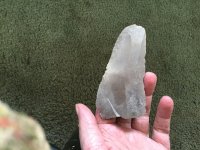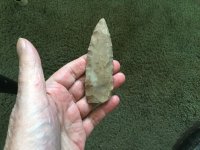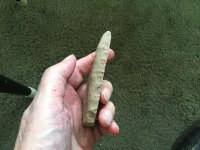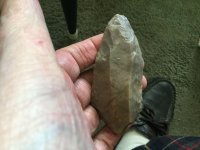uniface
Silver Member
I've not been able to find much information on these. Converse illustrates one similar to this example and says it's a relic of the Plano era (post-fluted points --contemporary with Agate Basin et al.).if later people made these, I'm unaware of it. Found on an Ohio River site in Meade Co., Ky. by Gail Ray of Vine Grove, Ky. So probably near there.
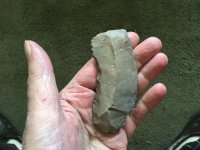
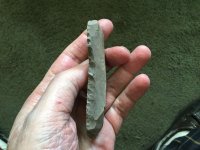
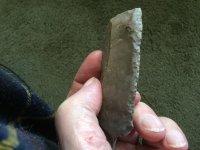



Last edited:
Upvote
0


